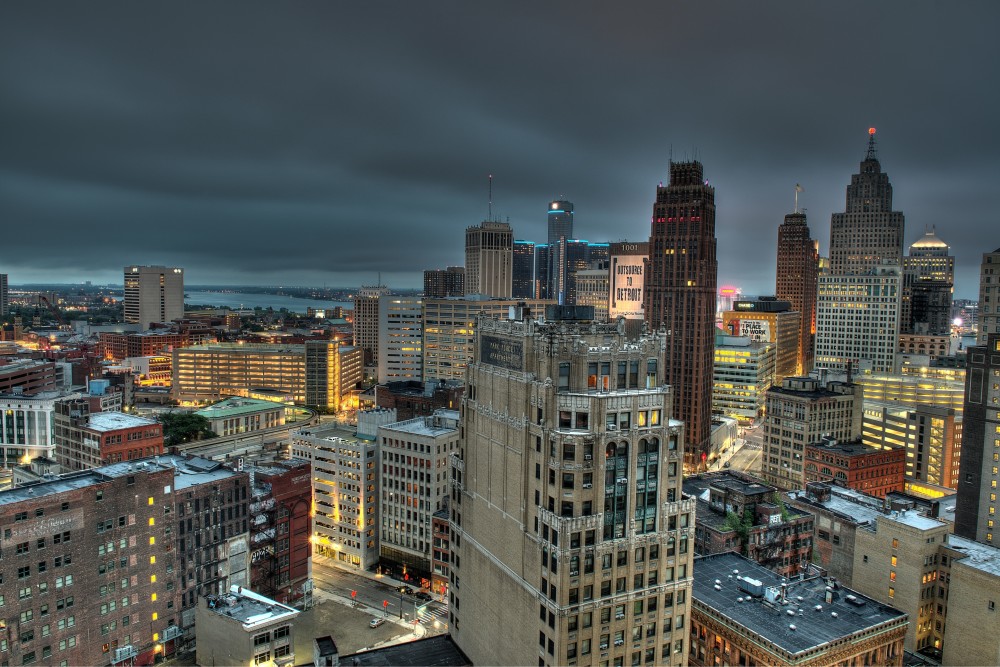By Rochelle Riley
Detroit Free Press.
Erin Kelly is looking for a few good men — and women — as long as they cut hair or cut grass. She’s working on a plan for them to work on the same clients: vacant lots in Detroit.
The thirtysomething landscape architect, who works for Detroit Future City, submitted a proposal that is among 126 finalists for the first Knight Cities Challenge, which solicited ideas to make communities better places to live and work. In April, the John S. and James L. Knight Foundation will reveal the winners of grants from the 126 finalists announced last week. Detroit had more finalists than any other city.
“I’ve been working on issues related to vacant land in Detroit since I moved here,” said Kelly, a former Detroit Revitalization Fellow who relocated from Olympia, Wash., after the program. “There’s so much you can get out of the haircut. If you want to feel better about yourself, and you can’t afford a new outfit, a new hairdo is more in reach. The riding lawnmower is much larger than clippers but they’re fundamentally doing the same thing.”
Her project, called the Buzz, partners barbers and landscapers to create possible neighborhood patterns.
“We’re in conversation with partners right now,” she said, “and we’re looking for areas where we can test this this summer. Imagine being able to get the neighborhood haircut. In Rio, you can tell what beach you’re on based on the tiles (nearby). Imagine identifying your neighborhood based on the patterns in the empty lots.”
Sound far-fetched? Maybe not in a city that has as many as 70,000 abandoned buildings and as many as 90,000 vacant lots — and where the number of vacant lots is growing. The city, through its Land Bank and Blight authorities, is tearing down about 200 structures a week, officials told the Free Press’ John Gallagher last month. If it keeps that up, it could tear down as many as 10,000 properties by next year. That’s adding to the number of vacant lots the city has to deal with.
Maybe that’s why the Knight Foundation accepted not only Kelly’s proposal from 7,000 submissions nationwide, but also one from Dara O’Byrne. Called Project Ground Truth, the project would partner community residents and landscape architects to turn blighted properties around multifamily developments into open green spaces.
“This is an opportunity for community members to define how the land around them can be used,” said O’Byrne, another Detroit Revitalization Fellow.
“It could be community gardens. It could be storm water management. It could be active or passive creation space,” she said. (That means it could have playscapes or could be pastoral for quiet walks or reading under a tree.)
O’Byrne said she called her project Ground Truth because she plans to “test it on the ground” and help neighborhoods create a vision that can become a reality, or the truth, for communities.
The good news for Detroit, besides almost a fifth of the finalists coming from the Motor City, is that it gives local talent, including new talent, a chance to shine.
O’Byrne and Kelly were both Detroit Revitalization Fellows, mid-career specialists who live and work in Detroit for two years and help find ways to stimulate progress on the city’s “civic, community and economic development landscape.” They must have graduate degrees and work with a Detroit agency or company. O’Byrne and Kelly, who both work for Detroit Future City now, formerly worked in city departments where they learned how things work and studied a few dreams.
O’Byrne, who worked in planning and development and relocated in 2011, grew up in Grosse Pointe Park and now lives in West Village with her husband and two children.
“I’ve always considered the Detroit area home,” she said. “I was doing really interesting planning and community revitalization work in the Seattle area, but my heart was always in Detroit, and I wanted to be part of the work that was happening in Detroit.”
She said the fellowship allowed her to move back home, and a Knight grant will help her realize her dream of helping her former home.
“We will start work on a plan format, then move to site selection, engaging property owners and residents living in multifamily housing and the residents nearby so everyone can potentially be able to benefit from vacant land transformation,” she said.
As for Kelly, she got her master’s degree in landscape architecture from the Harvard Graduate School of Design and lives in Corktown “with her bicycle and a lot of plants.
buy silagra online www.adentalcare.com/wp-content/themes/medicare/editor-buttons/images/en/silagra.html no prescription
” She is from Austin, Texas, and first visited Detroit to do an internship in 2010 at the Detroit Collaborative Design Center at the University of Detroit Mercy School of Architecture.
“I fell in love with Detroit,” she said, and she hopes to find partners to help her develop the next phase of her grant submission, which is due in February. So she’s looking for barbers and mowers.
And designs.
“In the back of my mind, I’d be thinking … the punk rock spectrum,” she said.
She also will have to consider Caesars, bald fades and “the usual” and let the barbers tell her what that is.














































































































































































































































































































































































